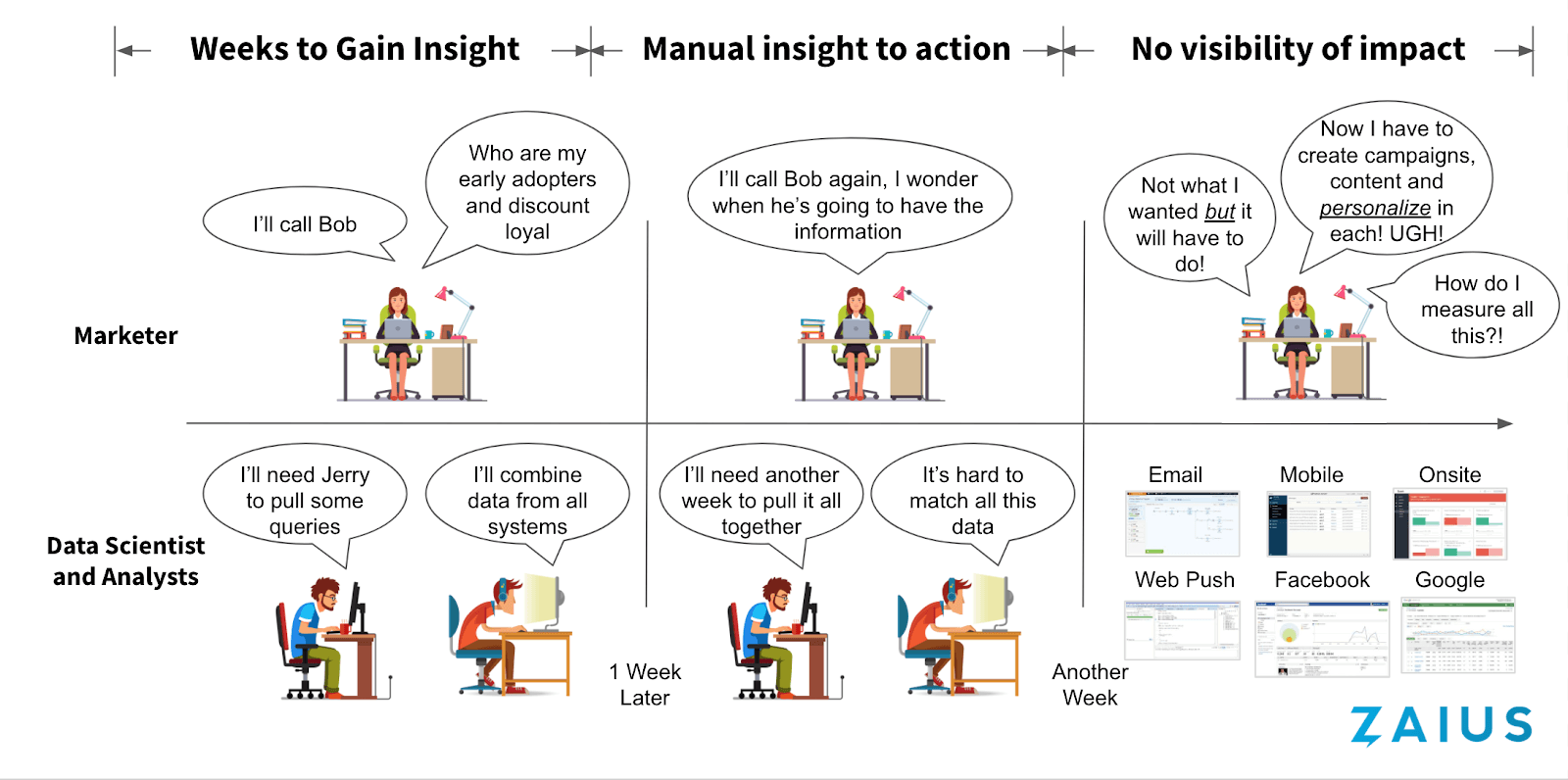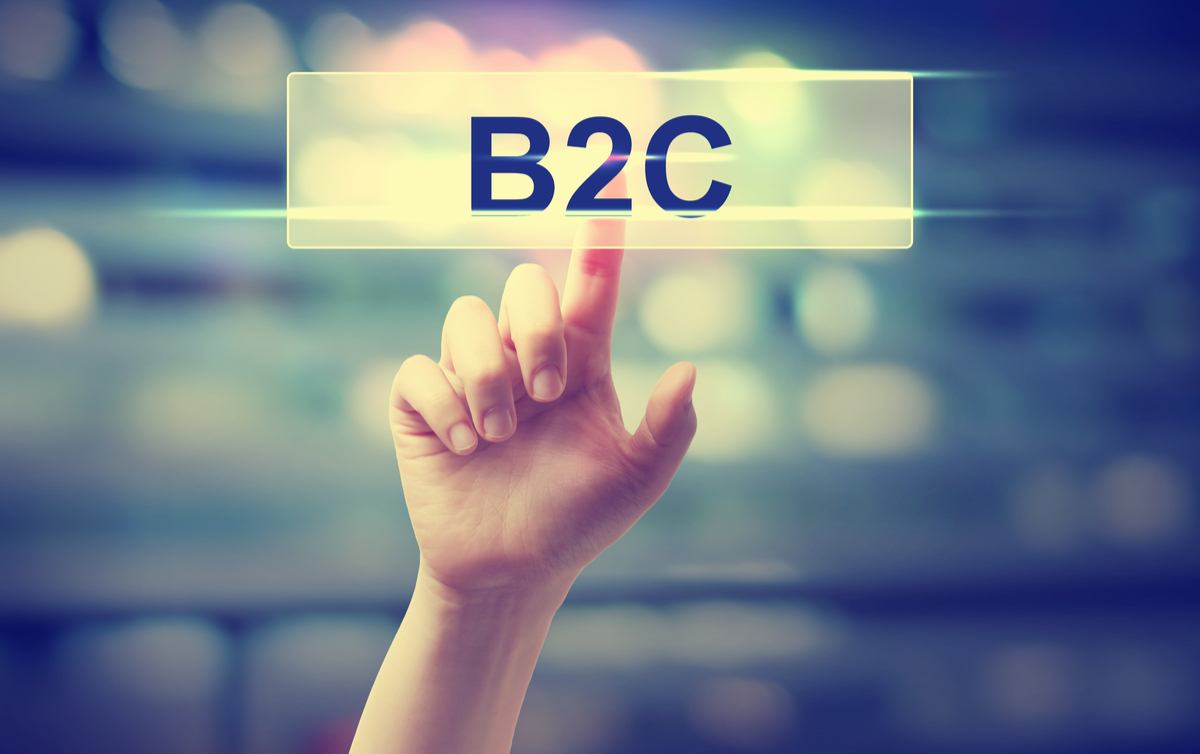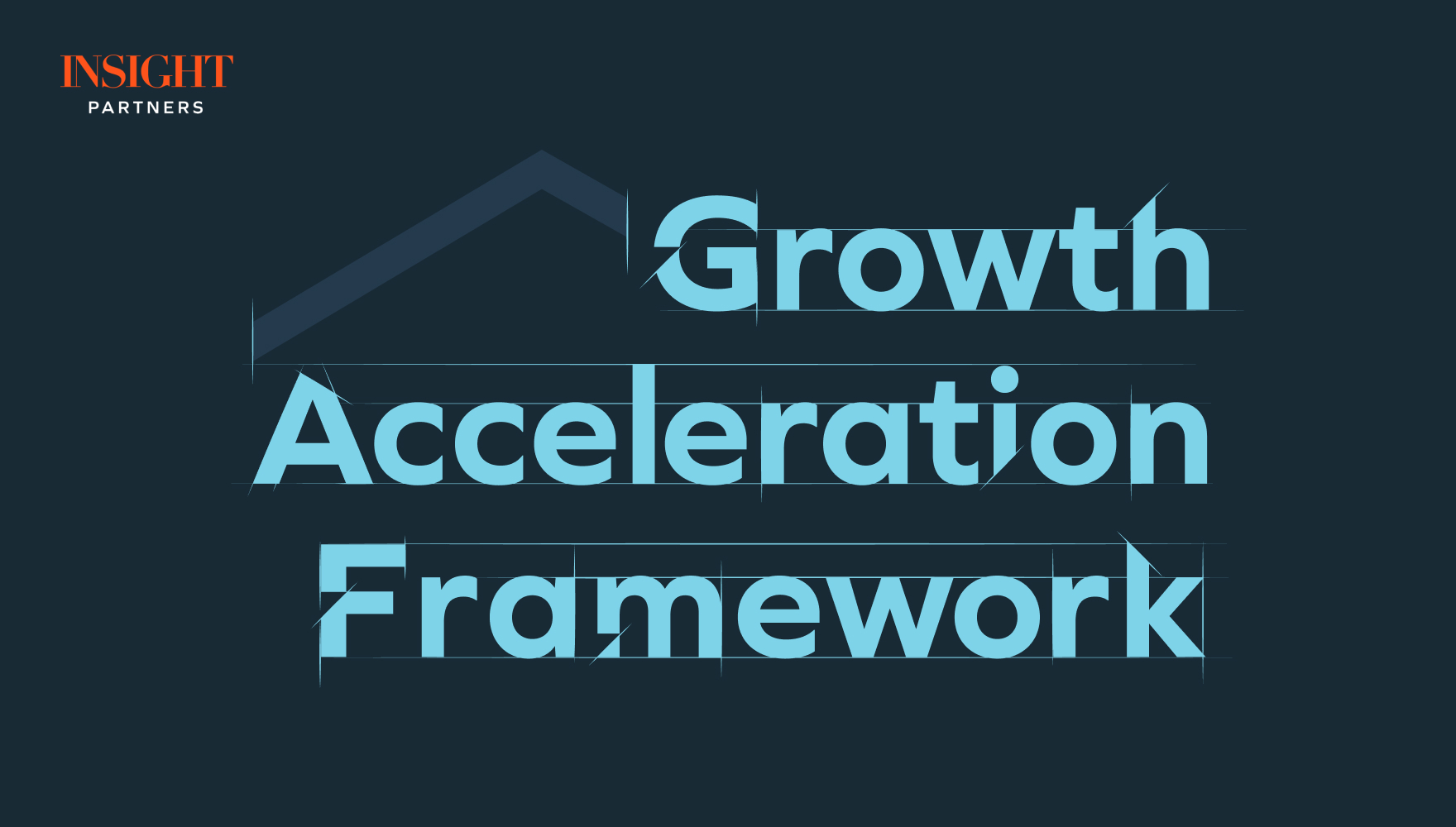There is a data revolution happening, but the B2C marketer is being left behind.
While business leaders across organizations have access to more advanced analytics than ever, B2C marketers are another story. Why is this specific group struggling to use data effectively?
To answer that, we have to go back 10 years to when the iPhone had just launched. At the time, everyone used a single device: a desktop or laptop computer. And the B2C marketer used a single channel: email.
5 years ago, everyone had a smartphone, tablet and multiple computers – one at work and one at home. At the same time, marketers were able to go beyond email and push notifications. They started using Facebook, Google, Instagram, and Twitter to target specific groups of people. Suddenly, B2C marketing became a multi-channel, multi-device problem.
In response, thousands of marketing technologies cropped up to handle the explosion of channels and new use cases, resulting in the crowded Martech space we see today. But use case and channel-centric solutions – email service providers, push notification vendors, paid ad platforms, etc. – only solve single problems. The result is a patchwork of siloed solutions making it difficult (if not impossible) to track users across different systems and devices.
In other words, B2C marketers today don’t know who Mark Gally is. I’m three anonymous users in three different systems and a sporadic email open in their Email Service Provider. There is no way for them to see a single, unified view of Mark Gally or any group of customers. And without a single view of all their customers, they can’t effectively market anything.
This is the problem we’re solving.
The state of B2C marketing today
So what does a B2C marketer’s day look like? When they want to create a campaign or uncover an insight, they must put in a data request to an internal analyst or data scientist. The analyst or data scientist then goes to IT and asks them to manually pull data from all their siloed solutions to try and make sense of the information. This is a long process that involves a lot of back-and-forth over a period of weeks.

Once the analyst sends back their “best guess” to the marketer, the marketer then must take that segment and manually upload the list into each of their marketing applications. Once it’s been uploaded, the marketer must go into each system and create a separate campaign for email, web push, application push, Facebook, Google, and others. This creates a “swivel chair” problem for the marketer – multiple systems and interfaces preventing them from creating an omnichannel campaign. And even though the segment is the same, the message and campaign cadence is different, making it tough to maintain a consistent brand message.
After each of the individual campaigns are finally executed across every channel, the marketer then must go through another manual process of pulling data from each system to report on the success of the campaign. It’s yet another laborious process to try to pull data out of each system and understand how opens, clicks, and views led to revenue. This simply isn’t a sustainable workflow for marketers or the data experts.
A patchwork of solutions
To solve these data challenges, there are typically two classes of systems that marketers turn to today:
- Customer Data Platforms (CDPs)
- Marketing Automation Platforms
Neither of these solutions solve the complete problem for marketers. Why?
CDPs are designed to harvest data from multiple systems and stitch it together for segmentation and analysis. But fundamentally it’s just one more system in a patchwork of applications. While it solves part of the problem for IT by centralizing customer data, it doesn’t solve the marketer’s workflow problem. The marketer still should go into each of their execution systems to create multiple campaigns (i.e. the “swivel chair”). So while CDPs provide additional insight, the marketer doesn’t have a central location to create and manage campaigns.
In contrast, marketing automation systems are all about execution – not data. Marketing automation has historically started with a single channel, bolting on additional channels to create omnichannel experiences. So while they’re focusing on solving the marketer’s problem of creating cross-channel campaigns from a single application, these platforms have limited analytics. Their underlying data models are focused on events and campaigns, not customer behavior, preferences and affinities. This prevents them from solving the marketer’s whole workflow – forcing them to go into a different analytical system to identify insights.
B2C CRM: Data and execution in one place
B2C CRM merges a data platform with marketing automation, encompassing the marketer’s entire workflow. Marketers today need to execute the entire marketing process in a single UI on a single platform – from opportunity discovery to lifecycle management to content and campaign creation. B2C CRM alone can do that. In fact, no other marketing technology solves for the marketer’s entire workflow.
B2C marketers are empowered to do more with a B2C CRM because it enables direct access to customer data by reducing dependence on IT and analysts. It not only delivers a single view into all of a customer’s activity across channels, but also surfaces critical insights and links them directly to marketing action. With execution and analytics in one location, marketers can – for the first time – identify the right segment based on a user’s true activity, while ALSO personalizing the message against the same, complete user profile.
By powering personalization, lifecycle automation, segmentation, optimization, and attribution from a complete view of all customer activity – across consumer devices and systems – marketers can optimize both the message AND the segments. This is something that neither a CDP nor marketing automation platform can do alone. And the result? Marketers can boost revenue per message by over 33 percent and expand reach by up to 50x by simply bringing a CDP and Marketing Automation platform into a single application.
The future of B2C marketing
B2C CRM isn’t just another tool in your toolbox—it’s a unifying platform that plugs into a company’s existing infrastructure AND powers the entire marketing ecosystem. It’s a centralized data and decision engine that powers your marketing through full campaign management. Since no system can effectively sit in isolation, B2C CRM becomes marketing’s system of record – powering the entire ecosystem.
Let’s take customer service teams and systems as an example of how B2C CRM can transform an entire organization, not just marketing. If a customer support representative is about to get on the phone with a customer, they want to not only see what the buyer did in the last 30 seconds before making a complaint, but also, what’s the customer’s lifetime value, brand affinity, and discount propensity? This empowers customer support to better understand a customer’s preferences so that they can appropriately manage the issue. This customer data is not stored in your customer service platform. Instead, it comes directly from the B2C CRM. But it’s displayed through the customer service platform. Sharing customer data across a company’s entire infrastructure is the true potential of B2C CRM.
B2C CRM marks the end of siloed legacy technology in business to consumer companies.












